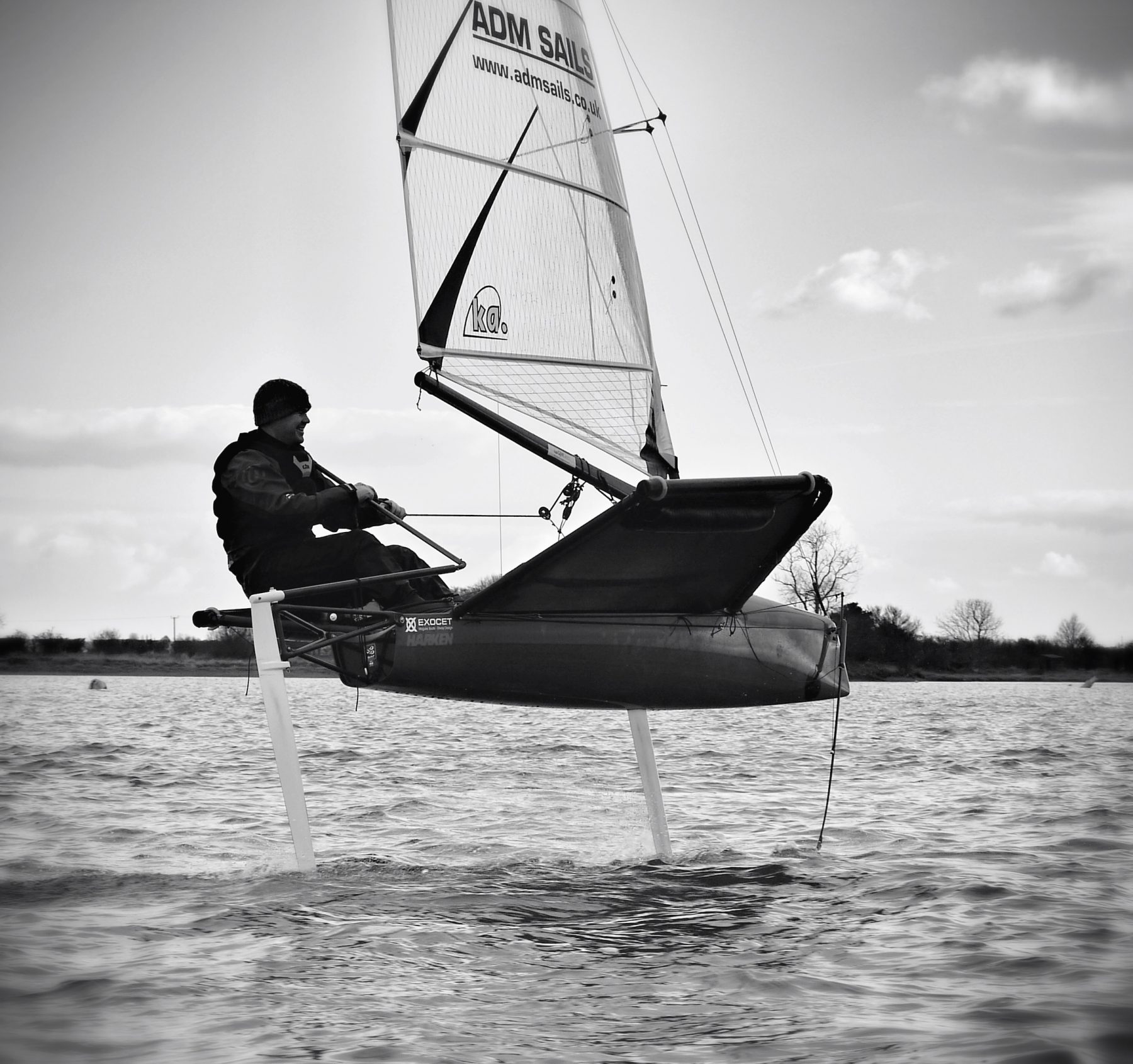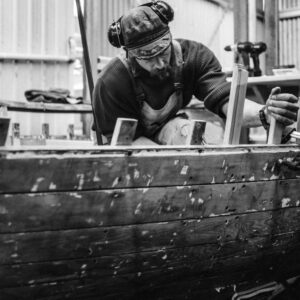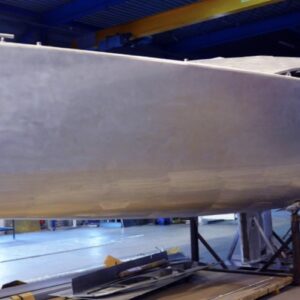Projects: Why hydrofoiling is taking the sailing world by storm
Why has foiling become so popular over recent years? Our very own David Johnson explains why foiling has added a seventh gear in speed and excitement to competitive sailing.
It’s been a great summer for British hydrofoiling. Not only did Maguire Boats’ Exocet Moth take almost every place on the leader board at this year’s International Moth European Championships but – at the time of writing – the Brits were also overall leaders of the America’s Cup World Series events.
You’d be forgiven for thinking that hydrofoils are a relatively new development. After all, it was only in the early 2000s that foils were even permitted within the International Moth Class. However, hydrofoiling has been around for well over 100 years!
It was way back in 1898 that Italian inventor Enrico Forlanini first began designing a hydrofoil blade. Yet it was scientist and inventor Alexander Graham Bell – would you believe? – who worked with his engineer and with Forlanini to develop and refine the first engine-powered hydrofoil watercrafts in the early 1900s.

A Forlanini hydrofoil on Lake Maggiore, Italy, c.1911 https://en.wikipedia.org/wiki/Enrico_Forlanini#/media/File:Forlanini_Hydrofoil_1911.jpg
These early hydrofoils were impressive and worked well but presented all sorts of issues to builders. The foils themselves were technically complex to design and hugely expensive to build, test and repair. While many commercial and military crafts went on to adopt foils throughout the mid-20th century (at least for a while), the prohibitive cost and effort meant that foiling for sport never really – pardon the pun – ‘took off’.
Today, it’s safe to say that this has completely changed. The question is, why now?
“Working on the Vampire is a liberating project because there’s no financial goal; we’re just doing it for the love of it – to keep pushing boundaries and to constantly hone the design to see if we can find new ways to foil as fast as possible.”- Graham Eeles, Owner, Eeles Boatbuilders
A serendipitous resurgence
First of all, there have been vast developments in software that have dramatically reduced the cost and time it takes to manufacture and test foils.
20 years ago you would have to sketch your foil designs on paper. Then you would build a painstakingly accurate scale model and run it through a wind tunnel or test tank, using complex analysis equipment that wouldn’t look out of place in a Formula 1 testing facility.
Today, however, designers, engineers and boatbuilders have the ability to create a hydrofoil design from start to finish using a laptop and appropriate software – such as fluid dynamics, section analysis and velocity prediction programming. Of course, nothing should be taken away from the skill and experience required to create a race-winning design that foils early, combining good lift over drag and excellent glide characteristics whilst resisting cavitation at speed. This might require hours of computing time and thought. However, a foil design can be optimised before a single penny is spent on materials and manufacture – a finite element analysis of the structure can define the fibre architecture and soundness of engineering.
“We’re proud to be able to produce an efficient foil capable of reaching insane speeds with a good sailor on board. But the challenge today is being able to produce a foiling boat that your average sailor can foil continuously at speed. That’s a true test for any foil and we’re thrilled to have achieved that with the Whisper.”- Henry White, Director, White Formula
A cut above the rest
When it comes to the manufacturing process, the past decade or so has delivered huge advances. The latest five-axis CNC routing technique now enables builders to cut the tooling for foil mouldings from five separate axes, with incredible accuracy.
The result is an ultra-smooth surface finish, which not only contributes massively to the final hydrodynamics of the foil – it actually provides assurance that the foil won’t break. Travelling at speed one imperfection can cause a foil to flutter and destroy itself, so there’s absolutely no room for error.
However, just as important are the materials that the foils are constructed from. High strength carbon fabrics have become widely available in recent years and so have excellent, reliable epoxy resin systems. Many of our own customers are huge fans of PRO-SET® epoxy products, using them with cutting-edge epoxy infusion techniques to create ultra-smooth, super-light and very robust foils.
The race to be the best

Exocet International Moth by Maguire Boats Courtesy of Oliver Southgate. Website: www.ojsphotography.Wordpress.com
“Being the builder of the current world championship winning International Moths, we are extremely excited to see the many other types of sailing craft adopt this new revolution in the sport.” – Simon Maguire, Owner, Maguire Boats
Yet, of course, a sport is absolutely nothing without its players – and when it comes to foiling, many of these are the builders themselves. Figures such as Graham Eeles, Simon Maguire of Maguire Boats and the White family of White Formula are driven by their love of foiling to constantly push the boundaries of what’s possible, designing ever-faster, stronger foils.
What you have, then, are the ideal conditions for a foiling renaissance coming together in perfect harmony: accessible software, flawless manufacturing, impeccable materials and a team of passionate players who are jostling to be the best. The question is, where will this take ‘the third way of sailing’ next? I, for one, am waiting with bated breath.
Thanks to David Johnson, Graham Eeles, Henry White and Simon Maguire for their contribution to this blog.
How do you build a race-winning set of foils? Find out in our articles about the Exocet Moth and the Whisper.
You can also discover more about Eeles Boatbuilders, and see his Vampire in action.




